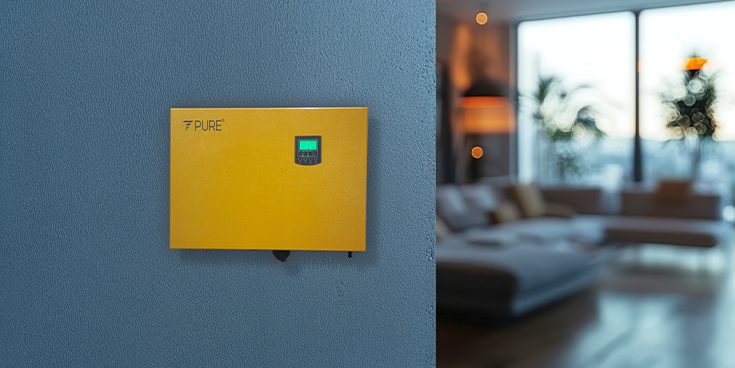If you’ve ever sat sweating in the dark during a summer power cut in India, you’ll know why I’m writing this. Honestly, it’s not just about comfort anymore—it’s survival. Between the rising electricity demand, random load shedding, and that one neighbor who somehow always has backup when you don’t I still don’t know how, a power backup battery for home in India is basically like insurance—you don’t think about it every day, but when you need it, you really need it.
The not-so-glamorous truth about power cuts
Let’s face it: power cuts are not just a village problem. Cities have it too, maybe not as long, but still super annoying. I remember once during an online meeting, the power went off, and my Wi-Fi router died. I had to explain to my boss that I wasn’t ignoring him; I was just staring at my frozen laptop screen like a statue. He didn’t laugh.
The Central Electricity Authority even reported that India’s peak demand has crossed 240 GW this year. That’s like putting too many apps on your phone—it just slows down and crashes sometimes. And no matter how many fancy buildings or IT parks we put up, the grid still struggles to keep up.
Why batteries are smarter than noisy generators
I used to think generators were the king of backup. You know that putt-putt noise? Like a tractor in your balcony. Then I stayed at a friend’s house where they had a battery-based inverter. The silence was golden. No fumes, no neighbor complaints, no petrol runs at 10 pm.
Plus, generators aren’t really eco-friendly. With everyone talking about green energy and EVs on Twitter or X, whatever Elon calls it now, running a diesel generator feels like carrying a Nokia 3310 while everyone else is on iPhones. It works, but come on.
Types of home backup batteries you’ll see
Here’s where it gets confusing. If you search online, you’ll find so many types—lithium-ion, lead-acid, gel, tubular. Feels like choosing between masala dosa, paneer butter masala, or biryani… all good but depends on your taste and budget.
- Lead-acid batteries – Cheaper, tried-and-tested, but heavier and need maintenance. Think of them like the old scooters—reliable, but you’ve got to kick-start sometimes.
- Lithium-ion batteries – More modern, lighter, charge faster, last longer. Basically the iPhone of backup batteries. Pricey, yes, but people love them for a reason.
- Tubular batteries – Somewhere in the middle. A bit more durable than your basic ones, still affordable.
The cost factor nobody talks about
Here’s the funny thing: people spend ₹50,000+ on a phone that lasts maybe 3 years, but hesitate to spend on a backup system that literally keeps your fridge, fans, and Wi-Fi alive during power cuts. A decent home battery setup could start around ₹15,000–₹30,000, depending on capacity and brand. And with electricity bills rising anyway, it’s not the worst investment.
Pro tip I learned from a shop guy: don’t oversize or undersize. If you’re a 2BHK family with 2 fans, 1 fridge, and some lights, you don’t need an industrial setup. And if you’re running 3 ACs, Netflix, and a PlayStation during outages—don’t blame the battery when it dies early.
Final thought from someone who has suffered enough
Look, power cuts aren’t going anywhere soon. Even if you’re in a metro, the monsoons or heatwaves always manage to mess something up. Having a power backup battery for home in India is less of a luxury now and more like buying health insurance—you just feel safer having it.

